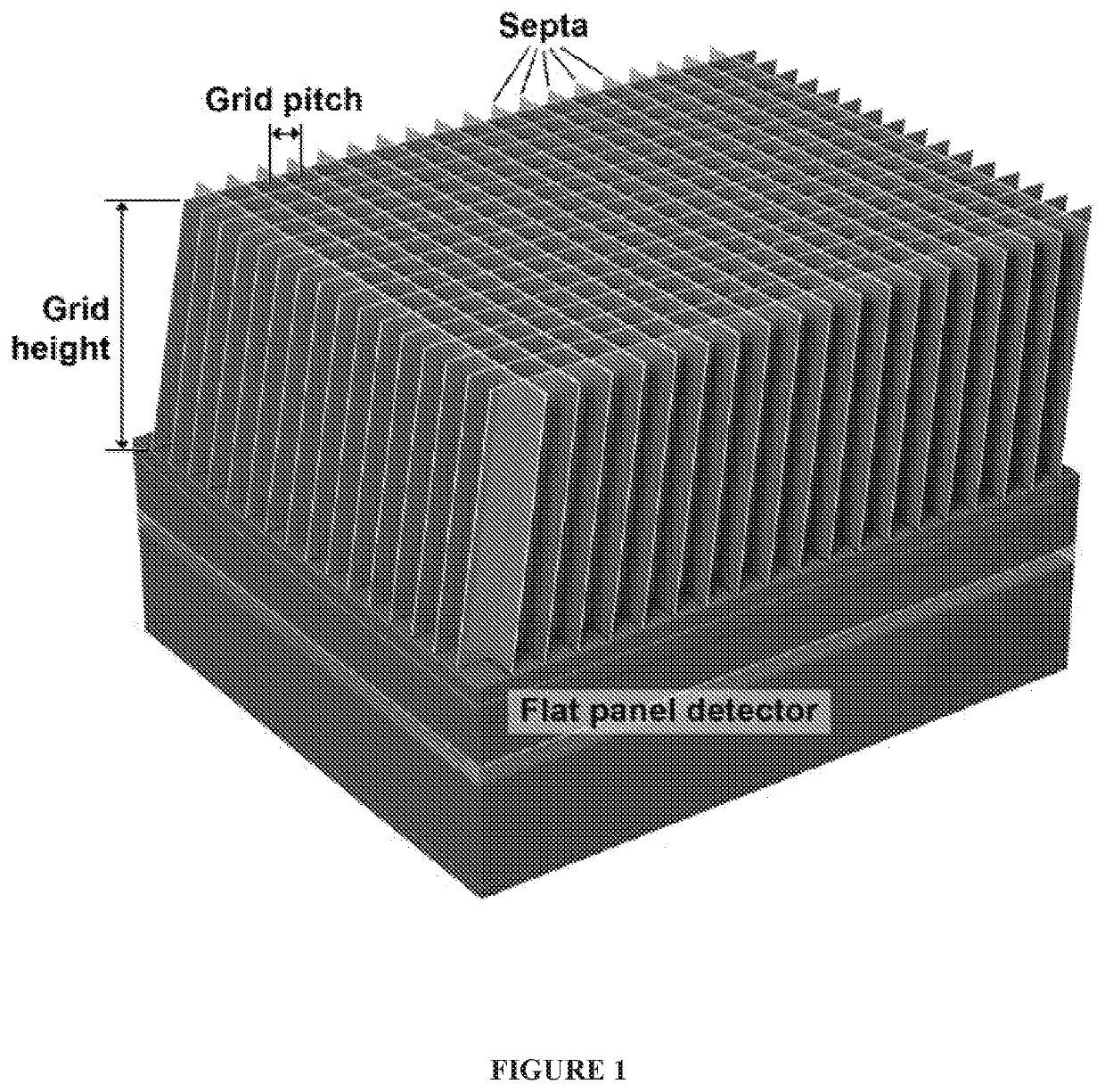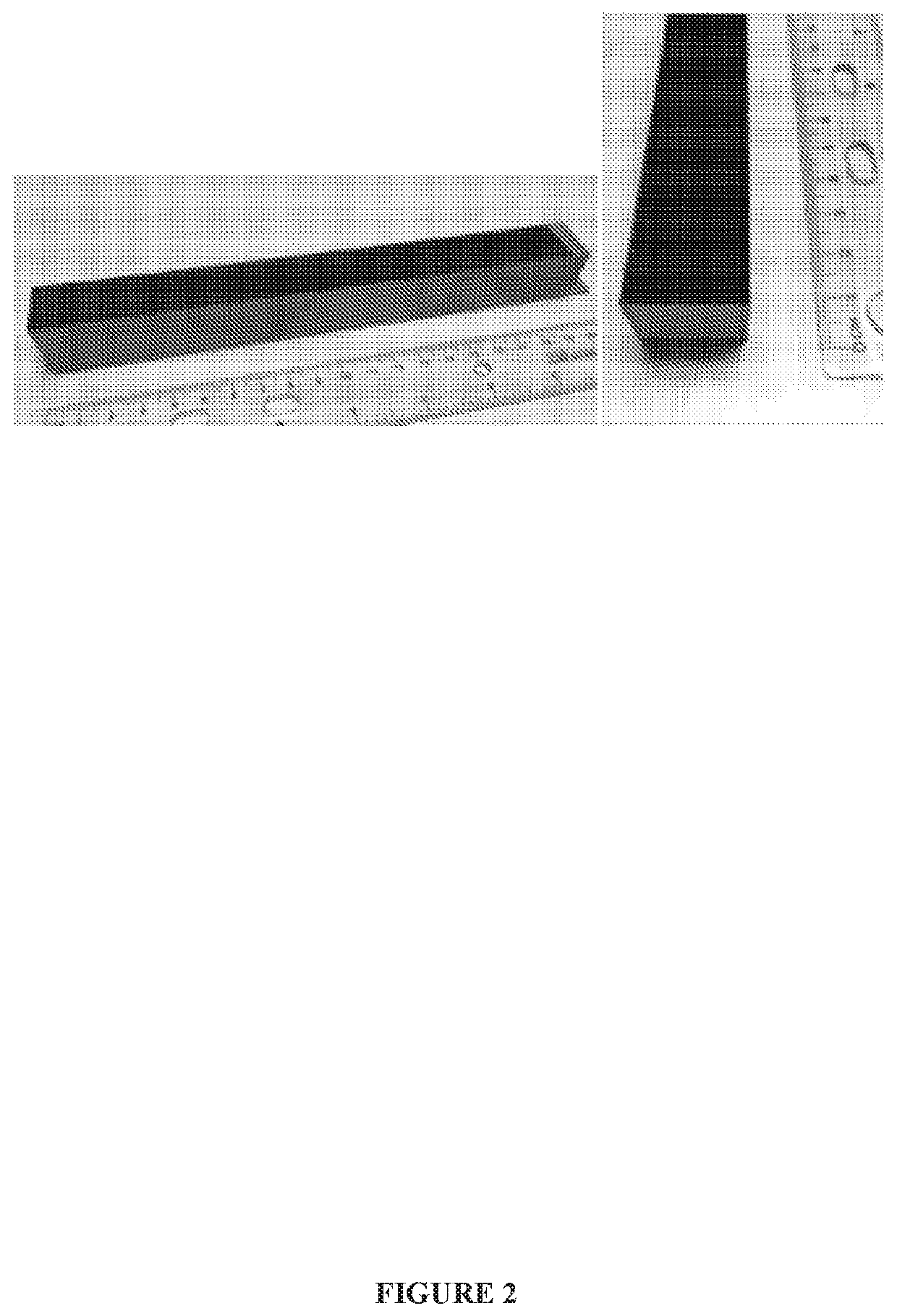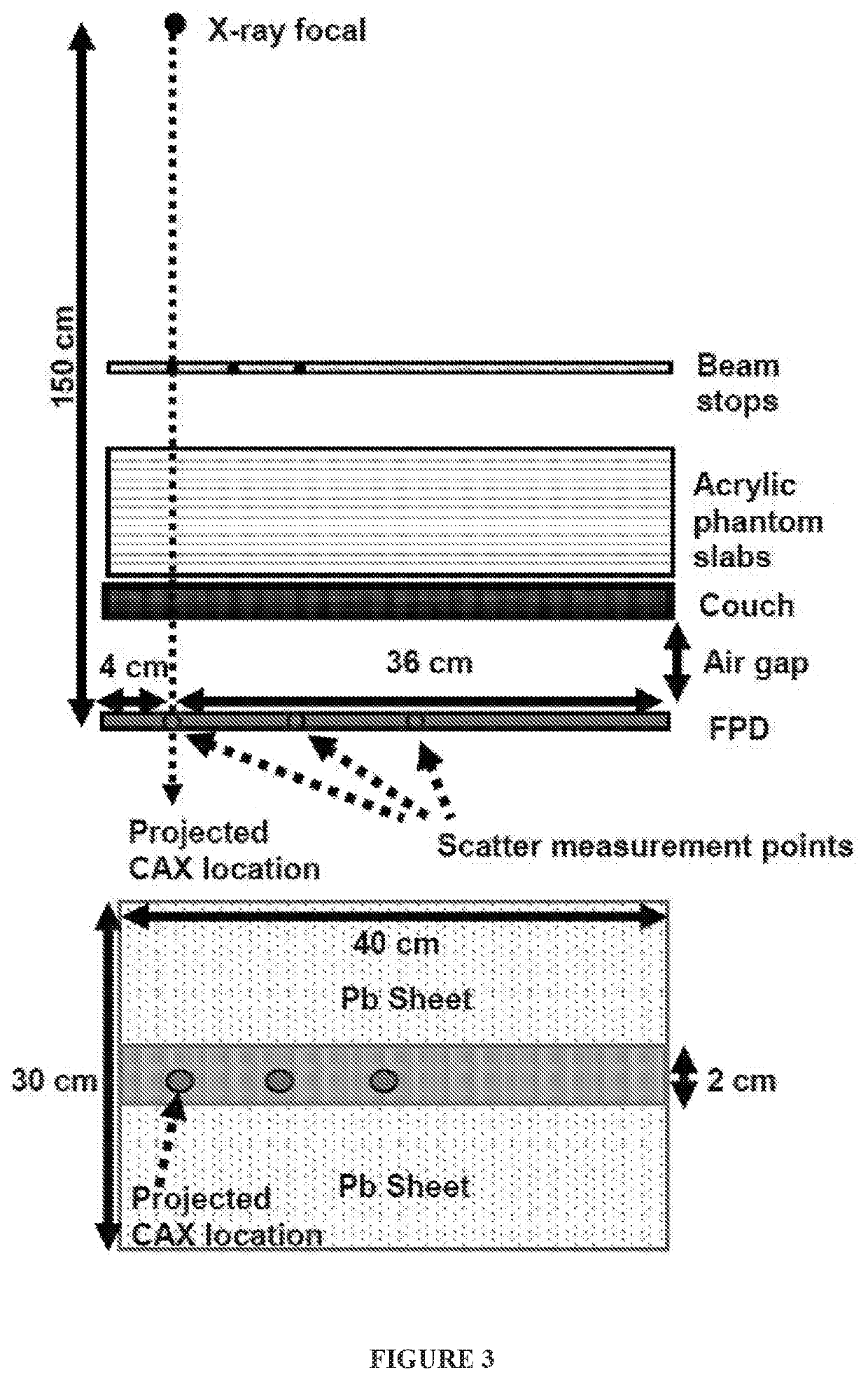A Hybrid Flat Panel Detector For Cone Beam CT Systems
a technology of cone beam and detector, applied in the field of xray detectors, can solve the problems of image quality degradation and image quality degradation, and achieve the effects of improving primary transmission, efficient scatter rejection capability, and improving the performance of flat panel x-ray detectors
- Summary
- Abstract
- Description
- Claims
- Application Information
AI Technical Summary
Benefits of technology
Problems solved by technology
Method used
Image
Examples
example 1
[0209]In one embodiment, the invention relates to a two-dimensional antiscatter grid, wherein said two-dimensional antiscatter grid is installed on top of a flat panel detector protective cover. In one embodiment, said two-dimensional antiscatter grid is described in FIG. 20, FIG. 21, and FIG. 22. In one embodiment, some basic x-ray transmission characteristics of the two-dimensional antiscatter grid are described in Example 2. In one embodiment, said hybrid flat panel detector is described in Example 3 & Example 4. In one embodiment, said two-dimensional antiscatter grid unique qualities and grid parameters are described in Example 5 & Example 6. In one embodiment, a method to correct scatter using a 2D antiscatter grid is described in Example 7. In one embodiment, an illustration of a pixelated scintillator is found in FIG. 20, FIG. 21, and FIG. 22. A more expansive description of one embodiment of the current invention is described in Example 2. Previous explorations of antiscatt...
example 2
Transmission Characteristics of a Two Dimensional Antiscatter Grid Prototype for CBCT [102]
[0227]Aim:
[0228]High fraction of scattered radiation in CBCT imaging degrades CT number accuracy and visualization of low contrast objects. To suppress scatter in CBCT projections, a focused, two-dimensional antiscatter grid (2D ASG) prototype was developed. In this Example, the primary and scatter transmission characteristics of the 2D ASG prototype aimed for linac mounted, offset detector geometry CBCT systems in radiation therapy, are described and compared its performance to a conventional one-dimensional ASG (1D ASG).
[0229]Methods:
[0230]The 2D ASG is an array through-holes separated by 0.1 mm septa that was fabricated from tungsten using additive manufacturing techniques. Through-holes' focusing geometry was designed for offset detector CBCT in Varian TrueBeam system. Two types of ASGs were evaluated: a) a conventional 1D ASG with a grid ratio of 10, b) the 2D ASG prototype with a grid ra...
example 3
Configuration of Current X-Ray Flat Panel Detectors and 1D ASGS
[0274]Conventional, Potter-Bucky Antiscatter Grid:
[0275]An array of 1D lead strips and inter-spacers (so called Potter-Bucky grids). Such Potter-Bucky grids absorb scattered x-rays while transmitting primary x-rays. Such grids are an “add-on” component to the flat panel detector assembly.
[0276]Phosphor (Scintillator Layer):
[0277]Phosphor layer absorbs incident x-rays and converts them to visible light photons. It is a continuous layer placed (or directly deposited) on the detector's pixel array. Since phosphor is a continuous layer, visible light photons from an x-ray interaction, diffuse within the phosphor, and spread over to multiple pixels. Thus it reduces the spatial resolution of the detector.
[0278]Detector Pixel Array:
[0279]It converts the visible light photons to electrical charge, which is converted to digitized signal.
[0280]One of the disadvantages of this approach the increased distance between the pixel array...
PUM
 Login to View More
Login to View More Abstract
Description
Claims
Application Information
 Login to View More
Login to View More - R&D
- Intellectual Property
- Life Sciences
- Materials
- Tech Scout
- Unparalleled Data Quality
- Higher Quality Content
- 60% Fewer Hallucinations
Browse by: Latest US Patents, China's latest patents, Technical Efficacy Thesaurus, Application Domain, Technology Topic, Popular Technical Reports.
© 2025 PatSnap. All rights reserved.Legal|Privacy policy|Modern Slavery Act Transparency Statement|Sitemap|About US| Contact US: help@patsnap.com



